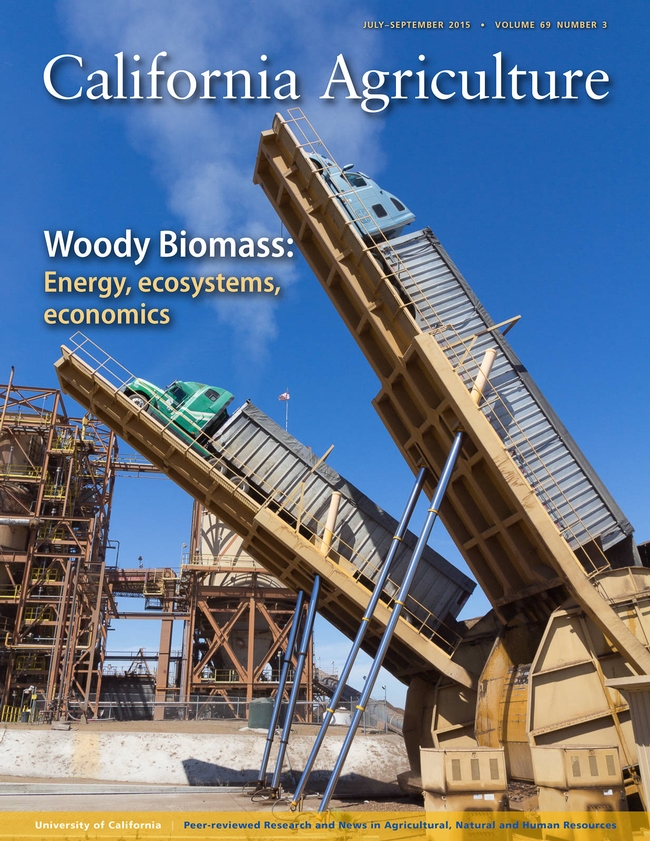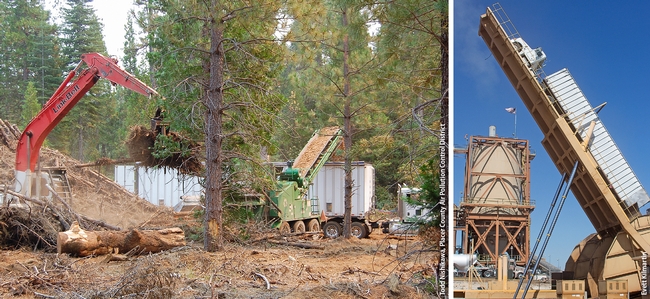What to do with woody waste in forests?
The destructive Rough, Valley and Butte fires have raised awareness of the abundant wildfire fuels in forests, leading to calls for thinning to reduce fire risk. But where should land managers put the small trees, limbs and treetops they remove? How does thinning affect forest structure, wildlife and pests? The latest edition of UC Agriculture and Natural Resources' California Agriculture journal contains a collection of peer-reviewed research articles on forest biomass energy, ecosystems and economics.
One way of disposing of the woody material is to burn it in biomass power plants to generate energy. However, nearly half of the power plants in California that run on woody biomass are operating on contracts that are set to expire in 2016, and low-cost solar power may deter utilities from renewing those contracts.
In his Outlook article, “The wood in the forest: Why California needs to reexamine the role of biomass in climate policy,” Peter Tittmann, academic coordinator for the Woody Biomass Utilization Group at UC Berkeley, writes, “By incentivizing better forest management and improved forest health, biomass energy leverages considerable climate and other environmental benefits beyond the direct reductions in carbon emissions from generating electricity from a renewable resource.”
UC scientists are evaluating the feasibility of using small, portable biomass power generators that could be moved to a forest thinning site, reducing the cost of transporting the biomass to a plant. Electricity generated in remote locations could be sold for a premium. Read more in “Following the fuel: How portable biomass energy generation may help rural communities.”
Peer-reviewed articles:
Forest biomass diversion in the Sierra Nevada: Energy, economics and emissions
In a Sierra Nevada case study, converting forest waste to electricity yielded energy and emission benefits, but was not economically viable. The authors suggest financial incentives for reduced air pollution could compensate.
Effects of fuel treatments on California mixed-conifer forests
Contrary to what some environmentalist advocates have argued, prescribed fire, mastication and thinning to modify wildfire behavior may have positive effects on the ecology of yellow pine and mixed-conifer forests.
Thinning treatments had minimal effect on soil compaction in mixed-conifer plantations
In mixed-conifer plantations in the Sierra Nevada, no large impacts were seen from commercial thinning or chipping treatments.
Modeling fuel treatment impacts on fire suppression cost savings: A review
Fuel treatments appear to reduce future fire suppression costs, but the savings are unlikely to fully offset the cost of the treatments.
To read all of the articles in the current California Agriculture, visit http://californiaagriculture.ucanr.edu.
California Agriculture is a peer-reviewed journal of research in agricultural, human and natural resources published by UC ANR. For a free subscription, visit californiaagriculture.ucanr.edu, or write to calag@ucanr.edu.




Posted by megan alder on October 30, 2019 at 7:38 AM